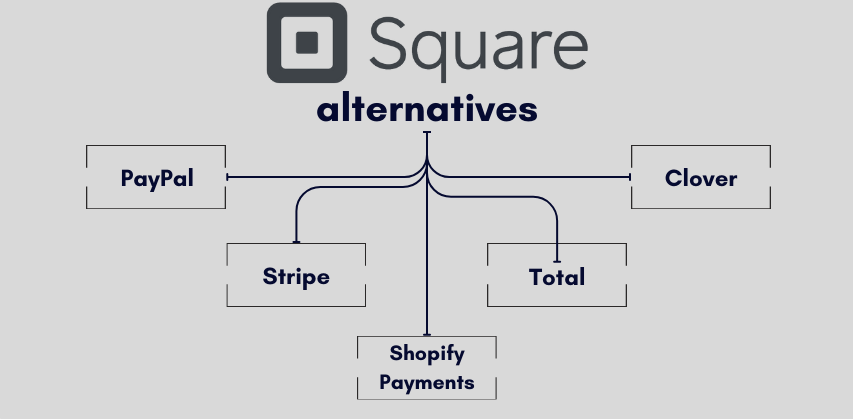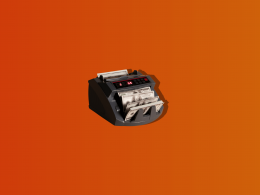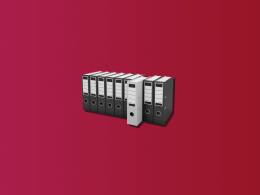In today’s digital economy, having an efficient and reliable payment processing system is vital for businesses. These systems streamline transactions, offering convenience and security to both merchants and customers. Square has been a dominant force in this arena, revolutionizing how businesses handle payments. However, its structure might not suit every business, prompting the exploration of Square alternatives that cater to varying business needs and preferences.
Square POS: exploring its features and limitations
Square Point of Sale (POS) has carved its place as a leading payment processing system, widely adopted for its user-friendly interface and comprehensive suite of tools that cater to the needs of small and medium-sized businesses. It simplifies processing of both in-person and online transactions while offering robust features like inventory management and analytics, making it an attractive choice for a diverse range of merchants.
Related:
You might also want to read more about how Square POS works.
Why Square is a frequent choice for many businesses
Square has gained substantial traction in the market due to several reasons:
- Ease of use
- Its simple and intuitive design makes it accessible for businesses that may not have extensive technical expertise. The straightforward setup and user-friendly interface have contributed significantly to its popularity.
- All-in-One Solution
- Square provides a holistic solution by offering not just transaction processing but also additional features like inventory management and sales analytics. This all-in-one approach simplifies business operations and reduces the need for multiple platforms.
- Accessibility
- With its mobile-friendly tools and reader, Square allows businesses to accept payments anywhere, whether it’s a brick-and-mortar store, at events, or online. This accessibility is a significant advantage for businesses on the go.
Why Square might not suit some small businesses
While Square is a popular choice, it might not align with the specific needs of some businesses for the following reasons:
- Processing fees and limitations
Despite its ease of use, businesses dealing with high transaction volumes, particularly in card-not-present transactions, might find Square’s processing fees less cost-effective. The structure may not be optimized for high-volume sales, potentially leading to higher operational costs. - Competition in the market
The rapidly evolving landscape of processing platforms has introduced a multitude of Square alternatives in the market. These Square alternatives may cater to specific business needs more effectively or provide more competitive pricing models, leading some businesses to explore other solutions better suited to their requirements.
In the increasingly competitive market, businesses often need to weigh the balance between the convenience and comprehensiveness offered by Square against the potential limitations or higher costs, especially when operating at scale or requiring specific features that Square might not adequately provide.
Exploring Square alternatives: a look at some competitors of Square
As mentioned earlier, Square has become an ideal solution for many businesses, however, it might not address the needs of everyone. So, some businesses might look for an alternative for Square. At this point, we gathered several solutions ecommerce businesses might want to look at.

PayPal
PayPal stands as a trailblazer in the world of payment processing, offering a comprehensive suite of solutions tailored for businesses of all sizes. Its array of services allows seamless payment acceptance, not only online but also in physical stores and through mobile devices. PayPal’s key emphasis on security and fostering user trust has solidified its position as a trusted and widely used platform.
The most prominent features of PayPal
Among its extensive feature set, PayPal offers some real gems to benefit businesses. Here they are.
- Online payment acceptance
PayPal allows businesses to seamlessly accept online payments, enabling customers to make purchases through their websites. Integration is typically straightforward, making it a suitable solution for e-commerce businesses of varying scales. - In-store transactions
With PayPal Here, businesses can process in-person payments using a mobile card reader. This feature facilitates swift and secure transactions, making it ideal for small businesses and vendors who operate at physical locations such as farmers’ markets or pop-up shops. - Mobile payment capabilities
Through the PayPal app, users can make payments using their mobile devices. This convenience extends to businesses, allowing them to accept payments through customers’ smartphones, thereby broadening payment variants. - Security measures
PayPal prioritizes security, implementing encryption and robust anti-fraud measures. With its renowned reputation for secure transactions, it offers both businesses and customers peace of mind during financial transactions.
POS capabilities: the power of PayPal Here
PayPal Here is the brand’s point-of-sale specifically designed for in-person transactions. It operates with a card reader and a mobile app, turning smartphones and tablets into portable cash registers. With PayPal Here, businesses gain access to features such as:
- Card reader flexibility
The card reader is adaptable and can accept various payment methods, including chip cards, magnetic stripe cards, and contactless payments, providing flexibility for both customers and businesses. - Inventory management
Users can manage their inventory, track sales, and generate reports through the PayPal Here app. This feature is particularly advantageous for small businesses looking to streamline operations. - Invoice creation
The POS allows for quick and easy invoice creation, ideal for service-based businesses or professionals who require sending invoices to clients. - Multi-user access
Businesses can grant access to multiple employees or users, each with tailored permissions and access levels, facilitating collaboration and managing tasks efficiently.
Service fees: understanding PayPal’s cost structure
PayPal’s service fees vary based on the type of transaction and the volume of sales. For in-person transactions using PayPal Here, the fee typically ranges around 2.7% for card swipes, and 3.5% plus $0.15 for manually entered transactions. Online transactions generally cost 2.9% plus a fixed fee based on the currency received. Additional fees might apply for international transactions, chargebacks, or currency conversions.
The pricing model offers versatility, particularly for small businesses and startups, allowing them to pay based on actual usage while providing competitive rates for different transaction types.
PayPal’s diverse range of payment solutions, its focus on user security, and its flexibility in terms of transaction fees make it an attractive option for businesses aiming to embrace various sales channels and maintain a secure payment environment.
Stripe
Stripe has earned its reputation for its developer-friendly APIs, allowing seamless integration for businesses looking to customize and tailor their payment systems. It supports various payment methods, including credit and debit cards, ACH, and even cryptocurrencies, catering to a wide spectrum of clientele globally.
The most prominent Stripe features
Let’s look at the most benefitial Stripe features for ecommerce businesses.
- Developer-centric tools
- Stripe’s API is highly adaptable, making it an attractive choice for businesses that require customization in their payment systems. Developers can access a wide range of documentation and support, enabling them to build bespoke payment solutions.
- International capabilities
- With a presence in over 40 countries, Stripe supports businesses seeking to expand globally. It allows transactions in multiple currencies, simplifying cross-border sales.
- Subscription-based models
- Businesses offering subscription services benefit from Stripe’s robust recurring billing features, managing subscriptions and billing cycles effortlessly.
- Reporting and analytics
- Stripe provides comprehensive reporting and analytics tools, offering insights into sales, customer behavior, and more, aiding businesses in making data-driven decisions.
POS capabilities: Stripe Terminal
Stripe Terminal is an extension of Stripe’s services, offering in-person payment acceptance through point-of-sale (POS) terminals. This feature allows businesses to process payments securely in physical retail environments, supporting in-store sales and enhancing the omnichannel experience for customers.
Stripe Terminal includes hardware such as card readers and software that integrates seamlessly with the Stripe ecosystem. It enables businesses to accept payments in-person while syncing transactions with their online sales data, providing a unified view of their business.
Stripe’s point-of-sale (POS) solution, offers a range of core capabilities designed to facilitate in-person payments for businesses.
- Hardware integration
Stripe Terminal supports a variety of hardware, including card readers and terminals that can be used at physical retail locations, enabling businesses to accept payments via various methods such as chip cards, contactless payments, and mobile wallets. - Unified platform
It integrates seamlessly with Stripe’s online processing system, creating a unified platform for managing both online and in-person transactions. This allows for a consistent view of sales and transaction data across different sales channels. - Security and compliance
Stripe Terminal prioritizes security, employing encryption and compliance with industry standards to ensure that in-person transactions are secure and protected from potential threats or fraud. - Offline mode
The Terminal supports an offline mode, allowing businesses to continue accepting payments even when the internet connection is unavailable. Once the connection is re-established, the transactions sync with the system, ensuring no sales data is lost. - EMV Compliance
The POS hardware provided by Stripe Terminal is EMV-compliant, supporting chip card transactions, which are considered more secure compared to traditional magnetic stripe cards. - Customization and branding
Businesses using Stripe Terminal can customize the user experience and branding, creating a consistent look and feel with their brand identity.
Service fees
Stripe’s fee structure is transparent, which is one of its notable advantages. It charges a standard fee for every transaction, making it easy for businesses to predict costs. The fees are typically based on a percentage of the transaction value, usually around 2.9% + 30 cents for online transactions, though fees may vary based on the region and paying method. Stripe Terminal may have distinct pricing models for hardware and in-person transactions.
Businesses utilizing Stripe should be aware of any additional fees, such as those for international transactions, currency conversion, chargebacks, or services like Radar for fraud prevention. Understanding these fees is crucial for budgeting and cost analysis, ensuring that the chosen processing solution aligns with the business’s financial objectives.
Stripe’s flexibility, developer tools, and strong suite of features make it an appealing choice for businesses seeking a customizable and adaptable processing system. With its transparent fee structure and robust POS capabilities through Stripe Terminal, it remains a strong contender in the market for businesses looking to streamline their payments both online and in physical store environments.
Shopify Payments
Shopify Payments is a processing solution specifically designed for businesses utilizing the Shopify ecommerce platform. This integrated payment gateway is tailored to provide a seamless and secure experience for merchants and customers alike.
As an in-house payment processor, Shopify Payments allows businesses to accept various payment methods, manage transactions, and simplify the payment process without the need for third-party gateways. It seamlessly integrates into Shopify’s ecosystem, streamlining the overall business operation.
Most prominent features of Shopify Payments
- Seamless integration
Shopify Payments seamlessly integrates into the Shopify platform, offering a unified ecosystem for managing products, inventory, sales, and payments. This integration simplifies the setup process for merchants, ensuring a hassle-free experience. - Multiple payments
The solution allows businesses to accept various payment methods, including major credit cards, digital wallets, and alternative payments, catering to a wide range of customer preferences. - Simplified checkout process
With a streamlined checkout process, Shopify Payments ensures a user-friendly experience for customers, reducing cart abandonment rates and improving conversion rates for businesses. - Enhanced security measures
It prioritizes security, providing encryption and fraud prevention measures to protect both businesses and customers from potential security threats and fraudulent activities. - Customer data managemen
Shopify Payments allows for secure management of customer data, ensuring compliance with data protection regulations and establishing trust with customers.
POS capabilities: Shopify POS
Shopify Payments is complemented by Shopify’s Point of Sale (POS) system, which enhances in-person selling capabilities for businesses. This POS offers various core capabilities:
- Unified sales system
The POS allows businesses to manage both online and in-person sales within a single interface, ensuring a cohesive sales strategy. - Inventory management
It offers robust inventory management tools, allowing businesses to track and manage their inventory seamlessly across different sales channels. - Order processing and tracking
The POS simplifies order processing and tracking, providing real-time insights into sales, order statuses, and customer interactions. - Customer Relationship Management
The POS assists in maintaining customer relationships by storing customer information, purchase history, and preferences, aiding in delivering personalized experiences.
Service fees
Shopify Payments follows a transparent fee structure, providing competitive rates to businesses. While specific fees may vary by location, generally, the service fees comprise transaction fees and additional charges for non-card payments. Transaction fees are typically determined based on the selected pricing plan and the type of transaction (online or in-person).
The clear and upfront fee structure of Shopify Payments simplifies cost considerations for businesses, helping them forecast and manage their expenses more effectively.
In summary, Shopify Payments stands as a robust processing solution, seamlessly integrated within the Shopify ecosystem. With a range of features, enhanced security, and the support of the Shopify POS system, it offers businesses a comprehensive platform for managing payments and sales, while the transparent fee structure simplifies cost management and financial planning.
You might also want to learn more about Shopify and its alternatives
Total by NCR Silver
Total by NCR Silver is a robust point-of-sale system integrated with a powerful processing solution. It caters to various businesses, particularly those in the retail and hospitality industries. Total aims to provide a comprehensive platform that combines both the functionalities of a traditional POS and a secure payment processing service.
The most prominent Totlal’s features
- Inventory management
Total streamlines inventory management, allowing businesses to easily add, track, and manage stock levels, leading to optimized supply chain operations. - Sales reporting and analytics
The platform offers detailed reporting tools, enabling businesses to track sales, identify top-performing products, and analyze transaction data to make informed business decisions. - Customer engagement
Total facilitates customer engagement through tools that help businesses create loyalty programs and manage customer databases for targeted marketing strategies. - Integrated payment processing
The platform integrates seamlessly with its payment processing services, ensuring a smooth transactional experience for both businesses and their customers. - Employee management
It provides tools for staff management, enabling businesses to track employee performance, manage permissions, and set access levels.
POS capabilities
Total offers a comprehensive suite of point-of-sale capabilities, enhancing business operations and customer service.
- Seamless checkout experience
The POS system is designed for a streamlined checkout process, enabling quick and efficient transactions for customers, reducing wait times. - Customizable interface
Businesses can customize the POS interface to suit their specific needs, adjusting layouts, features, and options based on their industry requirements. - Payment flexibility
It supports multiple payment types, including cash, credit/debit cards, mobile payments, and contactless payments, accommodating a wide range of customer preferences. - Hardware compatibility
Total is compatible with various hardware solutions, providing flexibility to businesses in choosing the devices that suit their operations.
Service fees
The service fees for Total can vary based on several factors, including the size of the business, the specific features required, and additional services selected. Typically, Total operates on a subscription-based model, with fees that may encompass software licensing, hardware costs, and ongoing support and updates. While specific fee structures may differ based on business needs, the system generally provides transparent pricing models to ensure businesses understand the costs associated with using the platform.
Total presents a strong and comprehensive package, merging powerful POS capabilities with an integrated payment processing solution, making it an attractive option for businesses seeking a seamless and efficient environment that combines multiple essential operations.
Clover
Clover is an innovative point-of-sale (POS) system that combines hardware and software solutions to cater to various business types, ranging from small startups to large enterprises. It is highly recognized for its flexibility, ease of use, and robust features, making it a popular choice in the competitive world of payment processing.
Most prominent features
Clover offers a range of features, enhancing the efficiency and management of businesses:
- Customization
It allows businesses to customize their POS setup by selecting from various hardware solutions, apps, and add-ons, catering to their specific needs. - Reporting and analytics
The system provides in-depth insights and analytics, aiding in understanding sales trends, customer behavior, and inventory management. - Inventory management
Clover streamlines inventory tracking, enabling businesses to monitor stock levels, manage products, and set up automatic inventory alerts. - Customer engagement
It offers tools for customer relationship management (CRM), loyalty programs, and gift card integration to enhance customer retention and engagement. - Payment flexibility
Clover supports various methods, including credit cards, mobile payments, and contactless payments, ensuring a seamless checkout experience for customers.
POS capabilities of Clover
Clover POS, at the core of the system, offers a myriad of capabilities to streamline business operations:
- Intuitive interface
Its user-friendly interface simplifies the checkout process, reducing training time for employees and ensuring a smooth customer experience. - Order managemen
It manages orders efficiently, allowing businesses to modify, track, and fulfill orders accurately. - Employee management
It offers employee-specific permissions, time tracking, and performance analysis, aiding in effective workforce management. - Offline functionality
Clover POS operates offline, ensuring business continuity even in the absence of an internet connection. - Third-party integrations
It integrates with numerous third-party applications and services, allowing businesses to expand their capabilities beyond the basic POS functions.
Service fees
Clover’s fee structure includes a range of pricing plans to accommodate diverse business needs:
Pricing varies based on the hardware configurations chosen by businesses, from basic countertop terminals to more advanced systems. Clover typically charges a fixed percentage fee per transaction, with additional charges for keyed-in transactions or international payments. Various service plans with different monthly fees are available, offering different levels of features and support.
The service fees for Clover may vary depending on the selected hardware, service plans, and additional services opted for by the business.
Clover’s comprehensive suite of features, robust POS capabilities, and flexible pricing plans make it an attractive solution for businesses seeking a customizable and powerful POS system tailored to their unique needs.
Factors to consider when choosing a payment processing system as a Square alternative
Selecting the right payment processing system is a critical decision for businesses, influencing their financial operations, customer experience, and overall success. Several key factors should be evaluated when choosing the most suitable system to align with the business’s operations and goals.
Integration with accounting systems
When choosing a payment processing system, one pivotal aspect to contemplate is its seamless compatibility with the business’s accounting software. The cohesive integration between the payment processing system and the accounting platform is critical for a streamlined and error-free financial management process. This amalgamation facilitates the smooth flow of transaction data, reducing the likelihood of manual entry mistakes and providing a holistic snapshot of the business’s fiscal well-being. Efficient integration results in a more cohesive and effective financial landscape, enabling small businesses to sidestep errors in reconciliation while enhancing the efficiency of their bookkeeping processes.
This syncretic connection not only optimizes the handling of credit card transactions but also empowers a robust financial overview, fostering better insights into the business’s economic performance. Platforms like Square, PayPal, and Clover offer varying degrees of compatibility with different accounting systems, providing users with the flexibility to choose a suitable integration that aligns with their specific accounting and financial needs.
POS capabilities and ease of use
Assessing the functionalities and user-friendly features of the point-of-sale (POS) system is pivotal in determining the right fit for a business. An intuitive and user-friendly interface combined with advanced features significantly influences how smoothly transactions are processed and how well the customer experience is enhanced. Within the POS, robust inventory management tools, comprehensive reporting capabilities, and order-tracking functionalities play a fundamental role. They empower businesses to handle inventory, oversee sales trends, and better fulfill orders, ultimately leading to optimized operations and heightened customer satisfaction.
Moreover, the card readers integration and diverse credit card processing solutions further bolster the functionality of a POS. Including various payment methods within the POS provides convenience for both businesses and customers, creating a seamless transaction experience. Additionally, having online and offline capabilities, alongside secure card reader integration, ensures transactions can occur anywhere, contributing to a more versatile and adaptable business operation. Furthermore, exploring variants that include insurance for transactions processed through the POS system can offer added security, safeguarding against potential risks and unforeseen circumstances, thereby enhancing the overall appeal and reliability of the chosen POS solution.
Security measures and fraud prevention
Security holds utmost importance within payment processing systems, particularly concerning the safeguarding of financial transactions. Selecting a payment system requires a meticulous focus on security aspects, encompassing strong encryption, fraud detection, and adherence to industry standards. Systems that ensure end-to-end encryption, tokenization, and secure data storage are significant in shielding the business and its customers from potential threats and establishing a safe environment for credit card transactions and online payments.
Prioritizing robust security features not only mitigates the risks associated with data breaches and fraudulent activities but also instills trust and confidence in customers. By fortifying the protection of sensitive financial information, businesses can cultivate a reputation for reliability, encouraging customer loyalty. The integration of secure POS with advanced encryption and fraud detection capabilities contributes significantly to the prevention of unauthorized access and fraudulent credit card usage. Such measures bolster the integrity of transactions and fortify the overall security of the business, ultimately enhancing the trust and peace of mind of both the company and its clientele.
Processing fees and transparent pricing
A comprehensive understanding of the fee structures within diverse payment processing systems is pivotal for businesses making informed decisions. The assessment should meticulously cover various components, including transaction fees, card-not-present fees, and particularly recurrent elements like monthly subscription costs. Alongside these, potential latent charges must be accounted for. Implementing transparent pricing models is essential to ensure businesses have a clear, unambiguous grasp of the costs involved in utilizing the payment processing system.
This transparent model allows for a thorough comparison of these monthly fees across multiple service providers, empowering businesses to choose the most financially efficient solution aligned with their transaction volumes and budgetary constraints. Examining the monthly fee in addition to other potential charges within the pricing structure enables businesses to make informed decisions in selecting a payment processor that not only fulfills immediate needs but also safeguards long-term financial interests.
Mobile credit card processing capabilities and ease of use on various devices
Mobile credit card processing has become an indispensable aspect for businesses exploring options beyond Square’s conventional POS offerings. The evaluation of a system’s compatibility, security measures, and user experience across various devices stands as a pivotal consideration in today’s dynamic market. This adaptation to mobile payment processing not only meets the evolving demands of changing consumer behaviors but also significantly extends the operational reach of businesses, particularly benefiting those in geographically remote or diversified locations.
The ability to facilitate swift and secure transactions on mobile devices presents a substantial advantage, granting users the capacity to cater to customers who seek the convenience and flexibility of mobile payments in their day-to-day transactions. With the increasing reliance on electronic payments, businesses leveraging efficient mobile CD processing demonstrate an inclination toward adapting to the preferences of modern consumers and capitalizing on the expanding trend of card-based transactions.
Choosing alternatives to Square: final word
A quick sumup. Choosing the ideal payment processing solution demands a comprehensive assessment of the business’s needs, encompassing integration capabilities, diverse features, robust security measures, and cost considerations. While Square remains a prominent choice in the market, you can find a Square alternative out of many solutions presenting a spectrum of features and pricing models tailored to different business sizes and industries. Considering the transaction fee, monthly fee, and insurance options, various platforms provide a flat rate for credit card transactions, making them appealing to small businesses. By carefully studying the details of each solution and grasping their unique propositions, a small business can make well-informed decisions that harmonize with their operational requirements and financial constraints.

.png)




